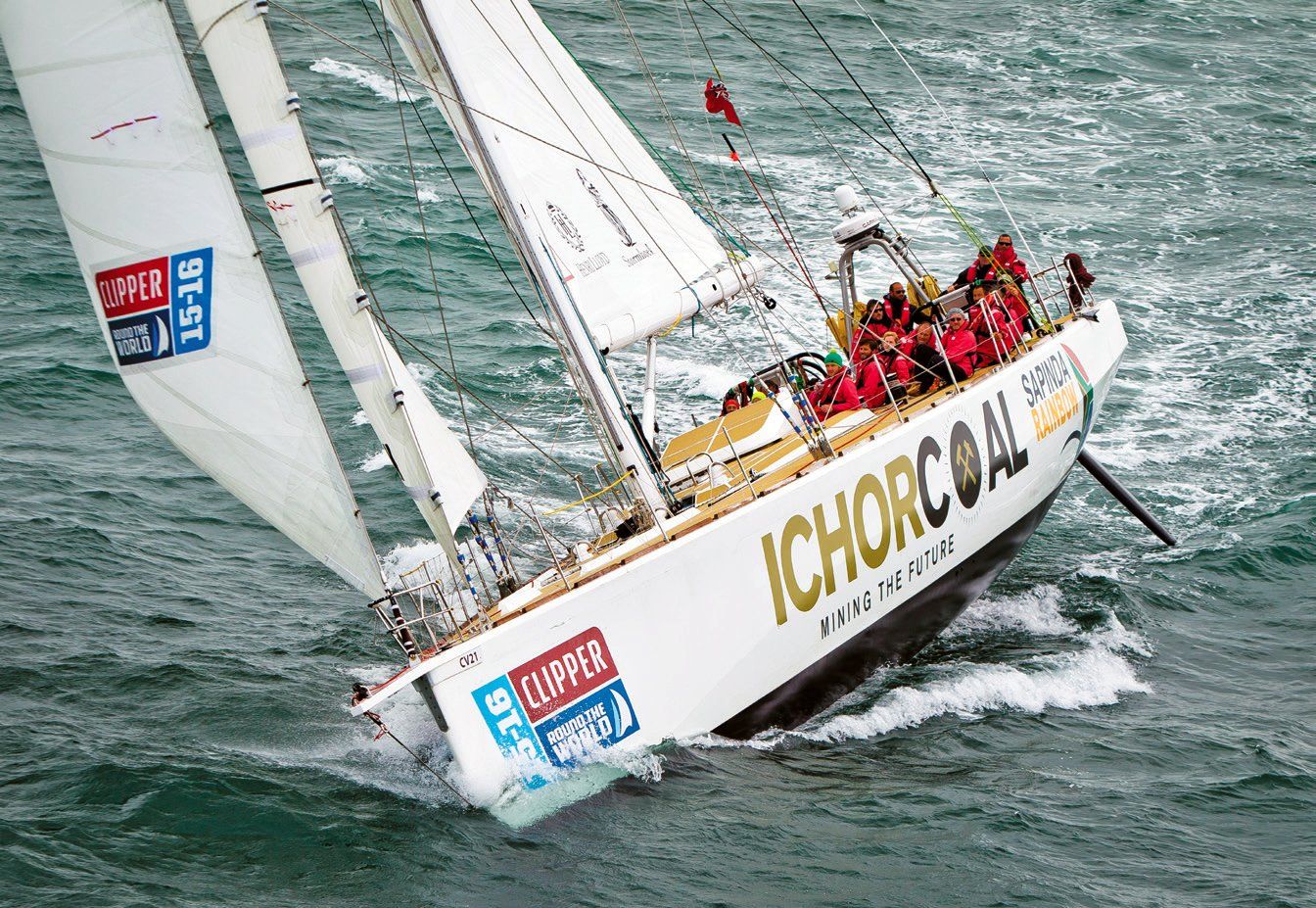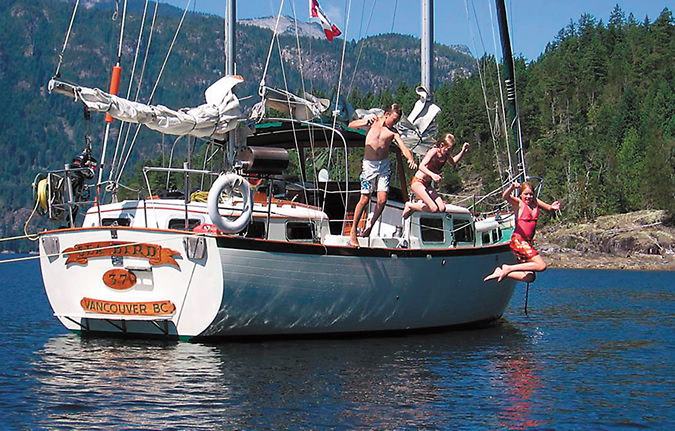Renting Adventure and Risk
As a long-term subscriber to Practical Sailor, and a former Clipper Round the World crewmember on the 2015/2016 race onboard IchorCoal, I needed to respond to your Risk Management and Renting Adventure article recently published (PS, January 2017 online). Your normal review articles on all things sailing have always been done with a very even-handed manner, providing your readers the information we need to make decisions on spending dollars and time on our sailboats. In my opinion, in the subject article, you have strayed away from the pure professional presentations and presented incomplete and damning comments specifically about the Clipper Round the World Race and its owner, Sir Robin Knox-Johnston.

Your article is written on two topics – renting adventure, and safe design of sailboats. You introduce your concerns about inexperienced sailors paying for an ocean racing adventure, and then stop, shifting to a discussion about swiss cheese safety analogy. Practical Sailor has failed to flush out the first before switching to the second. You did not complete the discussion on either topic; certainly not when it came to Clipper.
The article quotes the Clipper website, using a promotional phrase as a grabber to drive its point about not needing sailing experience. Did the authors of the article research and review the four specific levels of Clipper training required for all crewmembers, experienced or not? Did Practical Sailor become familiar with the qualification process of Clipper Coxswains, a group of more sailing experienced crewmembers, who are assigned to each crew to assist the skipper? There was no discussion of the location of the required Clipper training – the English Channel from southern England and the Tasman Sea out of Sydney, Australia.
Does Practical Sailor have knowledge of the intense emphasis on the safety requirements above and below decks drilled to each and every crewmember over the course of land-based and on-water training by Clipper?
In mentioning my crewmates Andy Ashman and Sarah Young, you leave the reader wondering about the real reasons for their deaths. You do this in a most unprofessional manner, quoting your article, Only those aboard IchorCoal really know what happened in each incident …. Did Practical Sailor obtain and read the in-depth report on the investigations into both deaths by the United Kingdoms Marine Accident Investigation Branch, a part of the UKs Department of Transportation. The investigations were fully supported by Clipper and Sir Robin and with full cooperation of the IchorCoal crews. You allude in your article that you do not have the full story. A more complete research on your behalf would have eliminated the above quote.
Richard Schwab
Bavaria 32
Dowell, MD
Thanks for your well reasoned comments. We are deeply sorry for the loss of your crew mates and can’t imagine how painful that experience must have been for you and the crew. Any time a sailor dies at sea, the staff here feel not only sadness, but also a sense of responsibility. For the past 42 years, our greatest motivator has been the hope that our work might someday keep a sailor from harm.
It appears that you may have first read the article when it was redistributed by email after the most recent Clipper Ventures fatality (see Tether Failure Cited in Fatality, Practical Sailor, January 2017). We can see how, in that context, the article could be seen as a deliberately vague critique of the Clipper organization.
The article was written in the summer of 2016, and published in January 2017 more than a year before the facts surrounding the fatalities were fully fleshed out by Great Britains Marine Accident Investigation Board. The aim was to look at ways to prevent accidents in the context of a common analogy used in risk management, a stack of sliced swiss cheese: When holes in each layer align, you get catastrophe. It is an analogy used to teach work safety as well.
The IchorCoal accidents, like the other well-publicized incidents featured in the article, were included as examples. Unfortunately, not all of the information on the deaths of your shipmates was available at that time. We tried to get in touch with Clipper Ventures but did not get a response, and since the deaths were not the focus of the article, we opted to wait until the MAIB investigation was complete to report on the details.
We’ve now updated the online version of the article with a link to the MAIB findings and recommendations, which we should have done as soon as it was released. We will report more on this in a future article.
As for the training that the sailors undertake and the level of expertise on board, we will also be taking a closer look at this aspect of the growing renting adventure business,
beginning with a report this month on safety trends (see page 6). Next month, we will look at safety tethers, equipment that is linked to the most recent Clipper fatality, the death of Simon Speirs. Mr. Speirs case is truly heartbreaking for us because it is linked to an apparent failure of his tether snap-hook, a piece of equipment we’ve evaluated dozens of times without recognizing its vulnerabilities.
Budget Bright Colors
Home ported a few miles north of the wind swept Point Conception in California, we are dead serious about safety and we typically purchase high visibility clothing and gear when its available. Unfortunately, apart from a selection of jackets, pants, and ditch bags, the selection at marine retailers is limited. Stores like REI are even worse.
I worked aboard ships and oil rigs for many years and most companies today require that high visibility clothing be worn on deck at all times, but very few recreational sailors have followed suit. This is unfortunate because safety clothing often has other attributes that could be beneficial to your readers.
In addition to being made of bright colors like international orange and fluorescent yellow, modern work clothing is often highly reflective, durable and inexpensive. It is also usually made out of synthetic materials rather than cotton which becomes cold and dangerous when it is wet.
Nearly every coastal town has at least one store specializing in work gear and sites like Amazon have a virtual cornucopia of inexpensive products designed for road construction crews but suitable for mariners. I keep a small selection of these clothes (an orange multi purpose coverall, base layer shirts, bright-orange-reflective watchcap, etc.) aboard our boat and usually don one item or another shortly after we get underway.
John Konrad
Master Unlimited Oceans
S/V gCaptain.com
More Insulation Tips
Regarding your recent article (Dirt Cheap Winter Insulation for Liveaboards, PS January 2018), were liveaboards on the Chesapeake. This is our fourth winter aboard this boat. Several comments Id like to add. We use regular window plastic with double-sided tape on our ports. We used to put the tape to the metal frame of the port but clean up in the spring was a pain.
This year we taped to the gelcoat and will clean up the tape with GooGone-easy. We havent found it necessary to heat it to shrink it. My wife put the plastic on the inside of the hatches so we no longer get any condensation from them either. Yes, we carpet the floors, and this makes a huge difference. We heat the boat with a oil radiator which dries out the air, and we supplement it with our Espar diesel heater when its really cold. We insulated the V-berth with a moving pad cut to fit.
This keeps moisture and heat off the V-berth walls and weve had no condensation issues. On my previous boat, I applied 3M insulation mylar bubble wrap (R9) from Home Depot to the underside of the cabin roof with 3M adhesive spray. It was amazing insulation from the sun and hot deck. It also kept heat in the boat during the winter. In the islands, the deck temp was over 110 F degrees, but below with just fans, was in the low 80s.
Tony Carey
Shannon 43 S/V Marite
Pasadena, MD

My Jackson barbecue has sat neglected and abused on the stern rail, uncovered through 10 years of exposure to the marine environment. When removed for much deserved spruce-up it was still functional, right down to the igniter. It disassembled easily. I asked Jackson (www.jacksongrills.com) for a few replacement parts. All parts were available and arrived promptly. There was no charge for more than half the parts even though the warranty had expired five years ago. I’m sure I will get a second decade out of this grill, and maybe a third.Bruce WoodburnCooper Seabird 37 SeabirdVancouver, B.C.





































